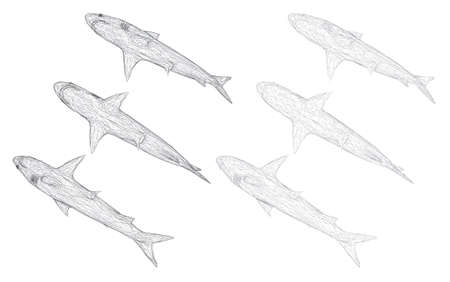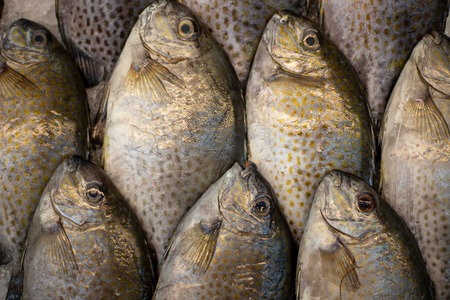Introduction to Ice Fishing in America
Ice fishing is more than just a winter pastime in the United States—its a cherished tradition that brings together families, friends, and dedicated anglers from all walks of life. Across regions like the Midwest, Northeast, and even parts of the Mountain West, frozen lakes transform into bustling communities of ice shanties, augers, and hopeful fishermen eager to reel in their next big catch. Each region has developed its own unique ice fishing culture, shaped by local fish species, weather conditions, and generations of know-how passed down through the years. As the sport has grown in popularity, so too has the knowledge about what it takes to succeed beneath the ice. One thing every seasoned angler will tell you: picking the right lures and baits can make or break your day on the hardwater. The choices you make need to match not only the target species but also the specific conditions found in different parts of the country. Whether youre chasing panfish in Minnesota or lake trout in upstate New York, understanding which lures and baits are most effective is key to filling your bucket—and making memories out on the ice.
Northern Midwest: Tried-and-True Lures for Walleye, Perch, and Pike
When it comes to ice fishing in the northern Midwest—think Minnesota, Wisconsin, and the Dakotas—anglers know that success is all about using time-tested lures and baits. These states are home to legendary lakes like Mille Lacs, Lake of the Woods, and Lake Winnebago, where walleye, perch, and pike are top targets beneath the ice. Here’s a breakdown of what’s in every local’s tackle box and how these tried-and-true methods stack up when you’re out on hard water.
Essential Lure Types for Northern Midwest Waters
| Lure Type | Best For | Typical Technique |
|---|---|---|
| Jigs (Leadhead or Tungsten) | Walleye & Perch | Vertical jigging with live bait like minnows or waxworms |
| Spoons (Flutter & Rattle) | Pike & Walleye | Lift-and-drop motion to mimic wounded baitfish; sometimes tipped with minnow heads |
| Tip-Ups with Live Bait | Pike & Large Walleye | Set-it-and-forget-it rigs using shiners or suckers as bait |
| Soft Plastics (Grubs & Minnow Imitations) | Perch & Panfish | Paired with small jigs for subtle presentations near weed lines or structure |
The Local Approach: Combining Lures and Bait
Most seasoned ice anglers in the Midwest swear by combining artificial lures with real bait. For example, a brightly colored jig tipped with a fathead minnow can entice even finicky walleyes during a midwinter cold front. Meanwhile, rattle spoons provide flash and vibration under low-light conditions—a proven tactic for drawing in trophy pike from a distance.
Tactics That Stand the Test of Time
It’s not just about what you use, but how you use it. Jigging cadence matters—a slow lift and pause can trigger strikes from lethargic fish, while an aggressive snap-jigging action might be needed to call in active schools. Tip-ups remain a staple for covering more water, letting you target multiple depths and locations at once. And don’t forget: local anglers always keep an eye on weather patterns and adjust their setups as the barometer changes.

3. Northeast: Tactics for Hardwater Trout and Panfish
When it comes to ice fishing in the Northeast—think New York, Vermont, and Maine—the focus often lands on trout and panfish beneath thick, snow-capped ice. The region’s cold, clear lakes require finesse and tried-and-true bait choices that consistently produce bites even in the dead of winter.
Go-To Baits for Northeast Ice Anglers
Maggots and waxworms are local staples for panfish like perch, bluegill, and crappie. These lively baits provide just enough scent and movement to tempt finicky fish in frigid water. For trout—especially brookies and rainbows—small plastics such as micro-tubes or soft plastic grubs fished on a light jig head get plenty of attention. Many Northeastern anglers tip their jigs with a single maggot or waxworm for added attraction.
Presentation Tips That Work
Subtlety is key in these icy waters. Jig slowly with small lifts and pauses to mimic natural prey movements. If you’re targeting trout near the bottom or suspended over deeper holes, try deadsticking—a method where you let your bait sit still after jigging to entice wary fish. For panfish, start near weed beds or drop-offs and use a spring bobber rod to detect those light bites.
Local Knowledge Makes the Difference
Ice anglers in New York’s Adirondacks often use brightly colored jigs tipped with waxworms for perch, while Vermont anglers swear by tiny tungsten jigs paired with plastics for bluegill. In Maine, where wild brook trout are king, a classic mealworm or single maggot under a small spoon can be deadly effective. No matter where you drill your hole in the Northeast, matching your lure size and presentation style to local forage will help you put more fish on the ice.
4. Great Plains and Upper Rockies: Adapting to Large Lakes and Reservoirs
Ice fishing in the vast lakes and reservoirs of the Dakotas, Montana, and Colorado is a unique challenge. These waters are home to big-water species like lake trout, whitefish, and sometimes trophy walleye, demanding specialized lures and baits that take depth and water clarity into account. Knowing what works below the ice can make all the difference for anglers looking to land a bucket-list catch.
Lure Choices for Deep, Clear Water
In large, deep lakes—think Fort Peck (Montana), Lake Oahe (South Dakota), or Blue Mesa Reservoir (Colorado)—you’re often targeting fish at depths ranging from 30 to over 100 feet. Here’s a breakdown of effective lure types for these conditions:
| Lure Type | Best For | Why It Works |
|---|---|---|
| Heavy Jigging Spoons (1/2 oz+) | Lake Trout, Whitefish | Fast drop rates reach deep zones quickly; strong flash attracts fish in clear water. |
| Tubes (3–5 inch) | Lake Trout | Mimics baitfish; works well with vertical jigging near rocky structures. |
| Rattle Baits | Walleye, Pike | The vibration and noise draw attention in both clear and slightly stained water. |
| Tip-Ups with Large Shiners or Smelt | Trophy Pike, Lakers | Natural presentation entices larger predators patrolling deep drop-offs. |
Bait Selection by Water Clarity
Water clarity in these regions can shift from gin-clear mountain lakes to slightly stained prairie reservoirs. Adjusting your approach is key:
| Water Clarity | Bait Choice | Tips for Success |
|---|---|---|
| Clear Water (>10 ft visibility) | White or Silver Tubes, Natural Minnows | Stick with natural colors; subtle action pays off as fish rely on sight. |
| Slightly Stained (<6 ft visibility) | Chartreuse or Glow Spoons, Scented Plastics | Add scent attractants; use brighter colors for increased visibility under ice. |
| Muddy Water (<3 ft visibility) | Larger Live Bait, Rattle Spoons | Focus on vibration/noise and strong scent to help fish locate your offering. |
Tactical Tips: Depth and Structure Matter Most
Depth: In winter, lake trout often suspend near mid-depth humps or along deep drop-offs. Start drilling holes at varying depths—don’t be afraid to go deeper than you would elsewhere.
Structure: Rocky points, submerged islands, and main lake basins are prime real estate for big trout and whitefish.
Pacing: Move frequently until you mark fish on sonar—mobility is crucial on these sprawling waters.
5. Pacific Northwest and Alaska: Going After Salmonids Under Ice
Specialized Tactics for Tough Conditions
When you’re ice fishing in the Pacific Northwest or Alaska, you’re stepping into the world of salmonids—char, salmon, and rainbow trout—that thrive beneath thick ice. These regions offer a unique challenge and require a different approach than the rest of the country. Understanding what triggers strikes from these fish is key to success.
Cured Roe: The Go-To Bait
Cured roe (salmon eggs) is a local favorite and often outperforms artificial lures for rainbows and char. Anglers rig small clusters of brightly colored roe on single hooks, letting them drift naturally under the ice. Roe cured with scents like anise or garlic can entice even finicky fish in cold water. Use lighter fluorocarbon leaders (4-8lb test) and smaller hooks (#8-#12) for a natural presentation.
Native Baitfish: Matching the Hatch
In Alaska and parts of the Pacific Northwest, native baitfish like sculpin, smelt, or sticklebacks are legal and highly effective when available. Rig live or dead baitfish just off the bottom using a simple jig head or under a tip-up. This mimics natural prey and is especially deadly for big lake trout and char.
Jigs and Spoons: Local Flavors
Metal jigs and spoons in silver, chartreuse, or pink imitate injured minnows—prime targets for aggressive trout and char. Try fluttering spoons tipped with a small piece of cut bait or roe to add scent. In deeper lakes, heavy jigs help get your offering down quickly to feeding fish below thick ice layers.
Pro Tips for Regional Success
- Keep presentations slow—a gentle jigging motion often works best in frigid water.
- Bring both bait and artificials to adapt if fish get picky.
- Check state regulations; some waters ban certain baits or have size restrictions.
Mastering regional tactics with cured roe, native baitfish, and time-tested lures will give you a serious edge when chasing salmonids through the ice in America’s wildest corners.
6. Key Tips for Ice Fishing Success Anywhere
Master the Art of Lure Presentation
No matter where you’re drilling your next hole—be it a Minnesota lake or a New England pond—the way you present your lure is key. Fish under the ice are often sluggish, so subtle jigging motions work best. Start with gentle twitches and pauses to mimic injured baitfish, and adjust your rhythm until you find what triggers bites. Keep your line tight and watch for even the slightest movement, as winter strikes can be light.
Read Your Sonar Like a Pro
Modern sonar and flashers are game-changers in ice fishing across the U.S. Use them to locate schools of fish, track how they respond to your bait, and gauge their activity levels. If you notice fish on the screen but no takers, experiment with different lures or colors. Sometimes just raising or dropping your bait a few inches makes all the difference. Don’t be afraid to move if sonar shows little action—mobility is often the secret weapon.
Adapt to Changing Ice Conditions
Ice conditions can change fast from region to region—or even hour to hour. Always check ice thickness for safety, but also pay attention to how weather shifts affect fish behavior. A cold front may push fish deeper or turn them less aggressive, while a sunny day might bring more movement. Adjust your lure depth, presentation speed, and bait choice as needed. Carry a variety of options in your tackle box and stay flexible.
Stay Mobile and Curious
The best anglers don’t just sit and wait—they explore. Drill multiple holes, try different depths, and test various spots until you find active fish. In larger lakes, use a snowmobile or ATV to cover more ground safely. On smaller ponds, walking and drilling systematically can yield surprises.
Local Knowledge Goes a Long Way
Finally, tap into local wisdom whenever possible. Talk to bait shop owners or other anglers about what’s working that week—regional trends can give you a real edge. Whether youre on Lake Erie’s vast expanse or a tucked-away Montana reservoir, combining time-tested techniques with these universal tips will up your odds of success every time you venture out onto the ice.

